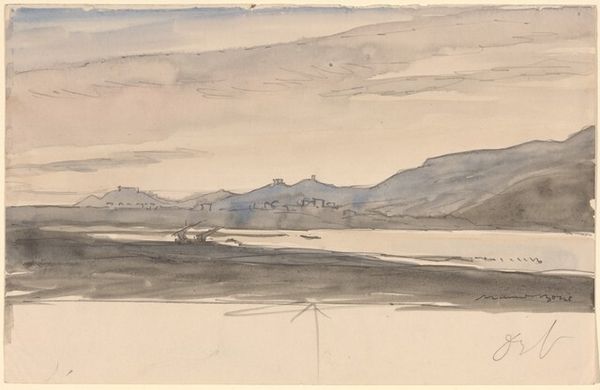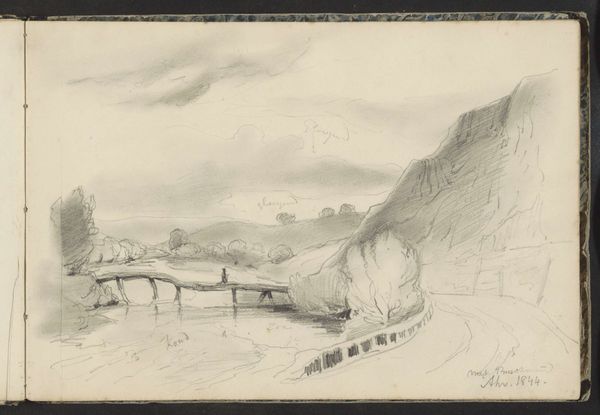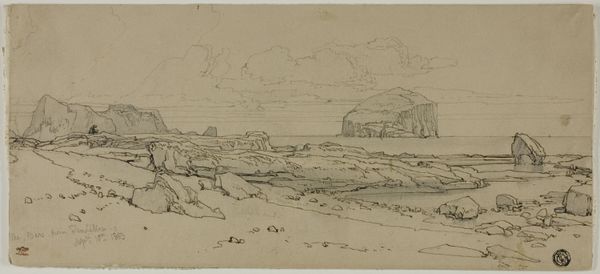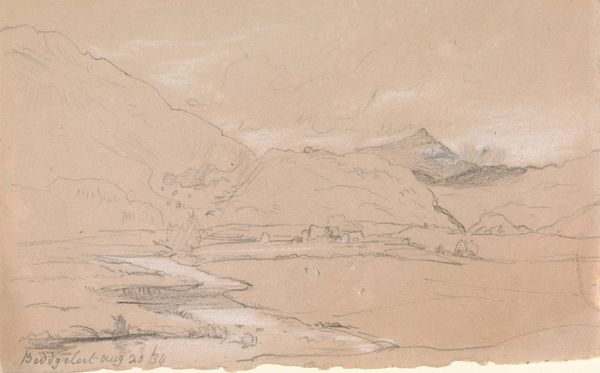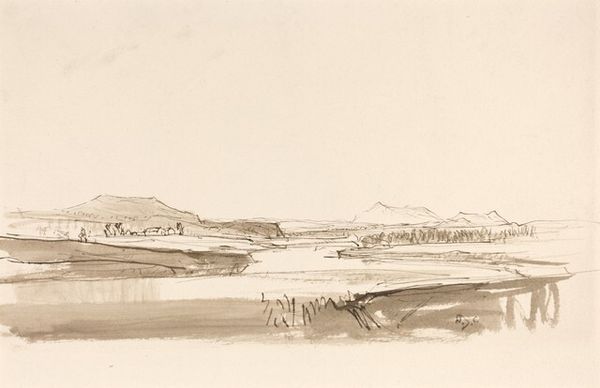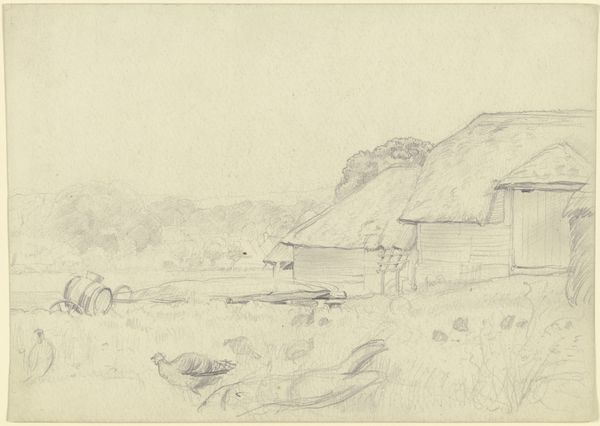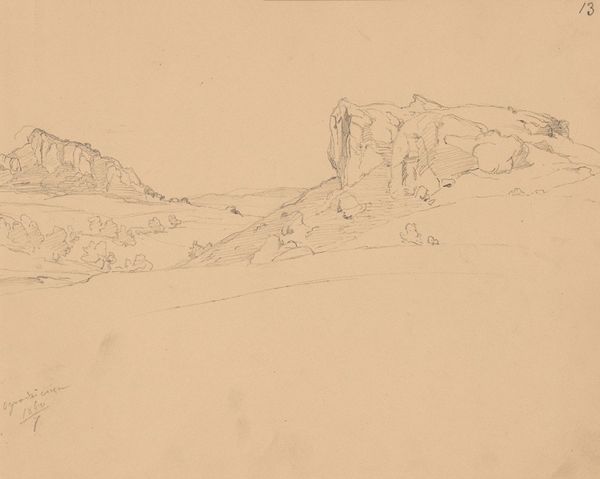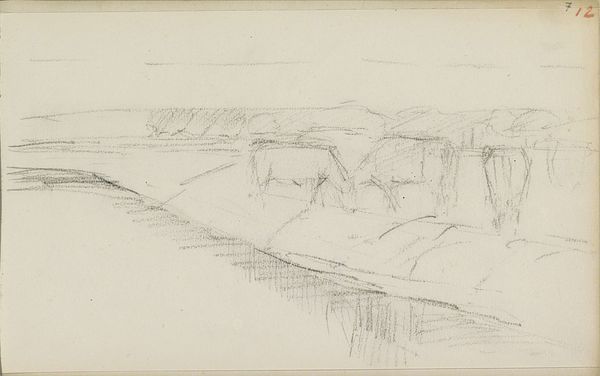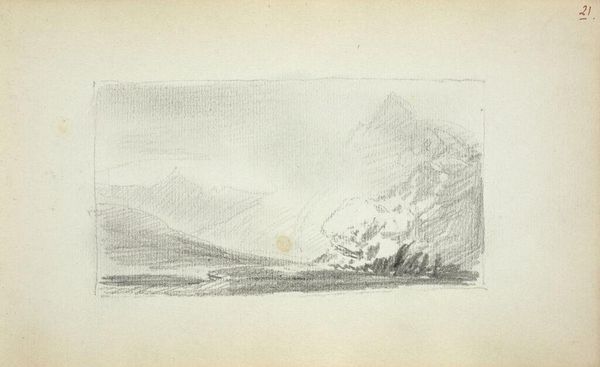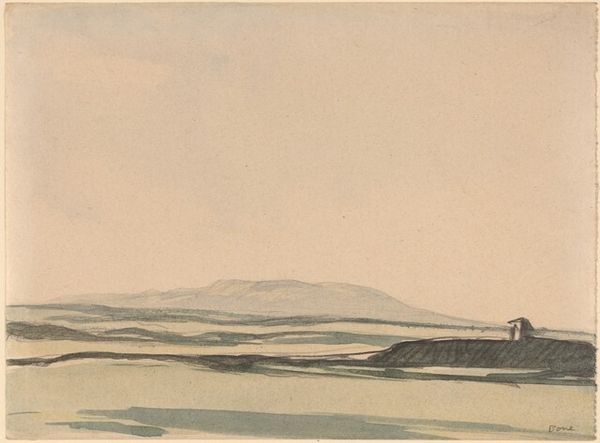
drawing, pencil
#
drawing
#
landscape
#
pencil
Dimensions: overall (approximate): 19.5 x 26.6 cm (7 11/16 x 10 1/2 in.)
Copyright: National Gallery of Art: CC0 1.0
Curator: Here we have David Young Cameron’s “Badenoch,” a pencil drawing depicting a rugged landscape. The work invites contemplation and perhaps a touch of melancholy. What catches your eye immediately? Editor: That bridge, partly submerged and heavily shaded, it strikes me as central. Bridges typically signal connectivity and flow, but this one looks more like a barrier. I’m also intrigued by Cameron’s material choices—pencil allows for precision, but here, the marks seem looser, sketchier than you might expect. It has the quality of being drawn quickly on the spot. Curator: That's perceptive. There's a certain spontaneity that almost feels dreamlike. Cameron often aimed to capture the soul of a place, didn't he? This drawing seems like a visual poem, distilling the essence of Badenoch's wild beauty. The solitary figure reinforces that, dwarfed by the grand surroundings. Editor: Yes, that figure is so small it almost appears consumed by the landscape. The composition focuses attention on the materials at play here – the rough paper surface accepting the graphite. Are there other examples where he uses such an emphasis on sketching versus completed line drawing in finished works? This feels deliberately immediate, almost instructional, as though its main object were an attempt at grasping, more than showing a fully realized composition. Curator: He certainly favored this kind of loose and emotive approach across his landscapes. He preferred suggesting details rather than precisely rendering them, relying on light and shadow to create mood and atmosphere. You sense that the act of drawing itself was a way of connecting with the land. I love to think that by using only pencil to do that work is itself a testament to the everydayness of the setting and not simply as "art" Editor: Absolutely, which complicates the usual understanding of labor too – a “sketch” proposes preliminary efforts and not finished labour. I now imagine his quick application of material evidence of the environment surrounding him. He captures what appears like daily rural settings in this piece! Curator: Beautifully put. And that speaks to the heart of what Cameron’s all about - to share a way of encountering the ordinary sublime. Editor: So much information can be communicated with few means and it becomes very obvious once we begin investigating these small clues.
Comments
No comments
Be the first to comment and join the conversation on the ultimate creative platform.
